Praise and praise!New discoveries in the field of Peking University of Science and Technology!
Author:Beijing University of Science Time:2022.08.06

近日,《Nature Communications》以“Atomic-scale insights on hydrogen trapping and exclusion at incoherent interfaces of nanoprecipitates in martensitic steels”为题在线发表了我校材料基因工程高精尖创新中心乔利杰教授团队和南京理工大学材料科学The latest cooperation results with the team of Academician Chen Guang at the School of Engineering/Glater Research Institute. The study found that not all nano -analyzed phase can capture hydrogen, and the carbon/sulfur space and elastic pull -up field on the interface on the substrate interface may determine the hydrogen capture behavior of the interface. This result provides an effective experimental method for the hydrogen capture behavior and micro mechanism of the nano -scale characteristics, which lays a certain foundation for the use of nano -phase to be enhanced and hydrogen anti -hydrogen anti -hydrogen effects.
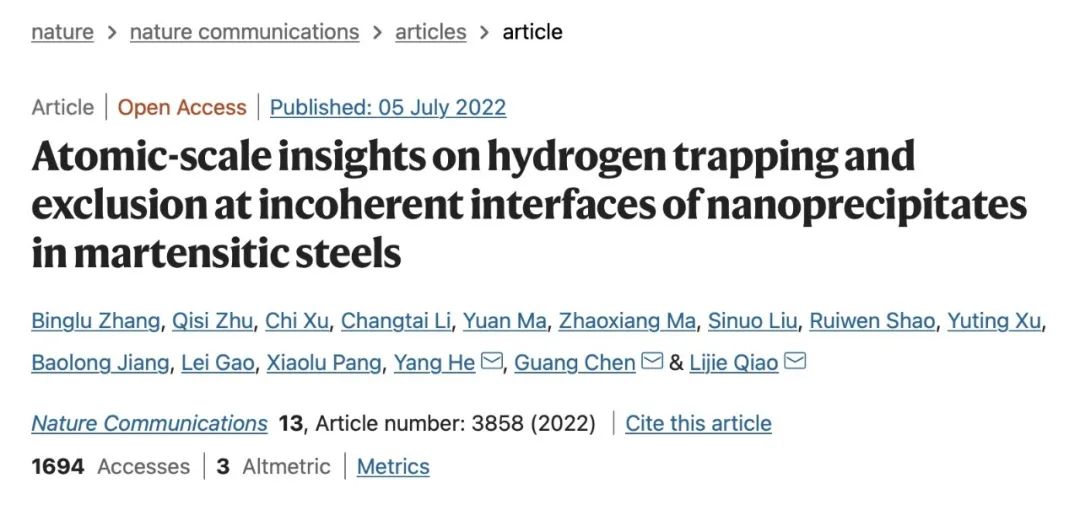
(Click the figure above to view)
The hydrogen atom is one of the atoms with the smallest radius. It is easy to penetrate into the material, which causes the material to break on crispy breaks lower than its yield strength or plastic deformation ability, which is greatly harmful to the service safety of the material. Generally speaking, the higher the material strength, the more sensitive it is to hydrogen. Therefore, the "hydrogen and brimming" problem needs to be paid attention to during the development and service of high -strength steel. Preliminary studies have shown that in addition to strengthening the material, the nano -precipitated phase distributed in the metal material substrate may also capture hydrogen, thereby reducing the content of diffusion in the material in the material, and the effect of improving the hydrogen resistance of the material. However, nano analyzes the micro mechanism of hydrogen capture hydrogen still lacks clear experimental evidence; in addition, for non -co -grid nano -analysis, due to the diverse and complicated structure of the non -communist interface of the substrate, the capture behavior and mechanism of hydrogen also have also there is controversy.
In this study, a single non-co-grid nano-nano-analyzed hydrogen atom was detected by scanning the Kaier probe power microscope (SKPFM) for the first time (see Figure 1-2). The results show that not all precipitated phases help hydrogen anti -hydrogen and gruel. Some non -communist interface capture hydrogen atoms, while some non -communist interfaces exclude hydrogen atoms.
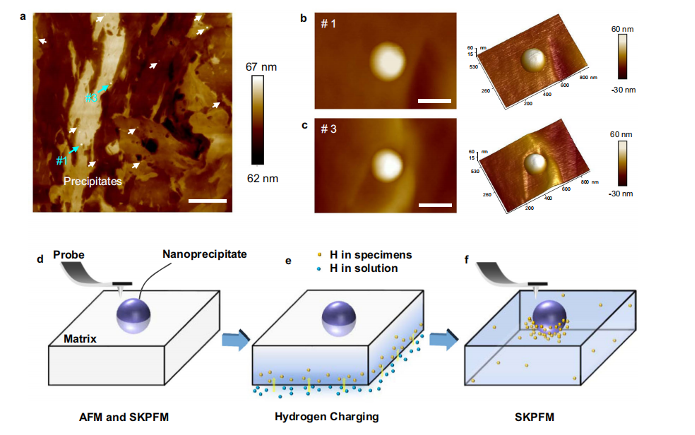
FIG
And scan the test diagram of the Kailvin probe power microscope experimental process
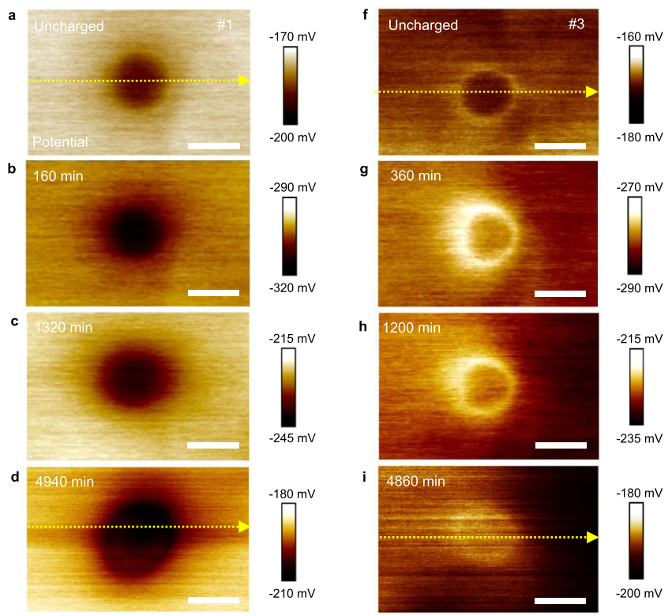
Note: The dark ring and the bright ring around the nanometer show that its capture of hydrogen and rejection of hydrogen
Figure 2. Scan the Kailvin probe power microscope photo
It revealed that the hydrogen capture behavior of different nano -precipitated particles
Further, scan the transmitting electron microscope through the gap correction of the radial electron microscopy, which marks the interface atomic scale structure and chemical characteristics corresponding to the above-mentioned characteristics of different behaviors (see Figure 3-4), indicating that the nano-analyzed surface of the alternative surface of hydrogen capture characteristics exists in the existence of carbon/sulfur vacancy, and and the existence of gap between the existence of the existence of the sulfur space, and and The interface has an elastic pull -up field near the neighboring body; in contrast, nano -analyzed the surface of the hydrogen characteristics has no obvious carbon/sulfur vacancy, and the interface is near the substrate existing elastic pressure response field. Therefore, carbon/sulfur vacancy and elastic pull strain are likely to be the key element of the non -co -grid interface capture hydrogen atomic behavior.


Figure 3. Nano analyzed the structure of the concentration, the relative orientation of the matrix
The interface model
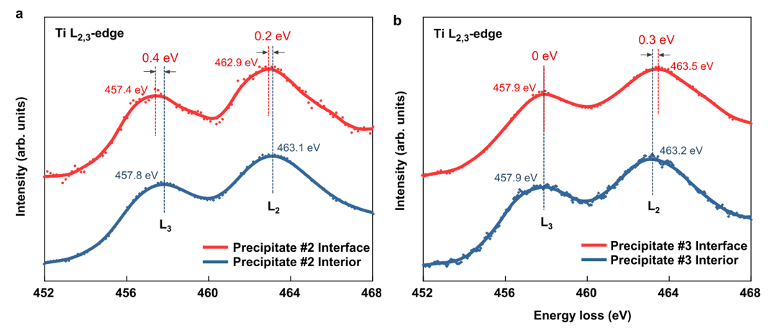
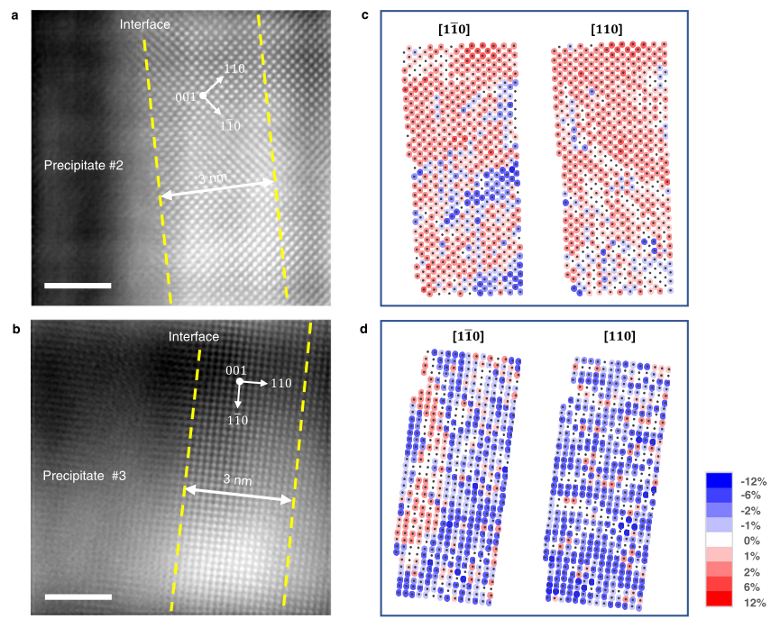
Figure 4. Analysis of electronic energy loss spectrum inside and interfaces
Atomic -level strain distribution with the interface
The above understanding is to better use the nano -phase phase to enhance the effect and hydrogen anti -hydrogen anti -hydrogen effect, providing basic guidance for the development of high -strength "anti -hydrogen anti -hydrogen" steel. Due to the difficulty of direct imaging of solid-soluble hydrogen atoms, this study provides an effective experimental method for exploring the hydrogen capture behavior of nano-scale characteristics and analyzing its micro mechanism in the same aspect, which provides new atomic mechanism research on materials-hydrogen interaction. way. This work has received strong support from the National Natural Science Foundation of China (U1706221, 52071022, 51571117, 52171002).
USSTB | Beijing University of Science and Technology
Produced: New Media Center
Source: Materials Department
Edit: Han Yansen
- END -
It will be equipped with a Tianye 9000+ processor IQOO another new machine hardware parameter exposure or from the NEO series

Just when the new machine of # IQOO10 # series is selling hotly, a few days ago, a...
\"Big Mac\" stands up

Yesterday, a 106 -meter -long and 10 -meter -diameter propylene propane separa...